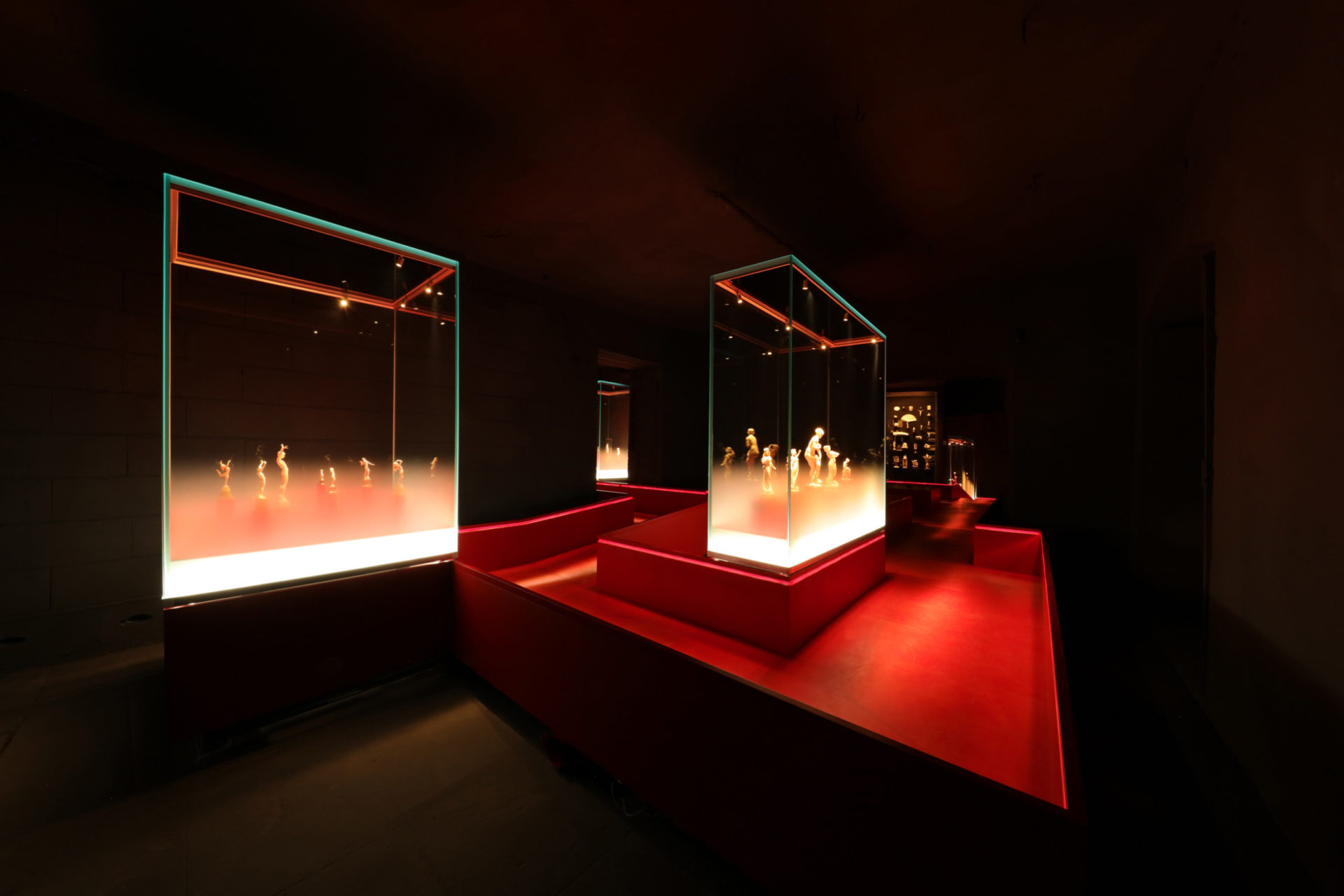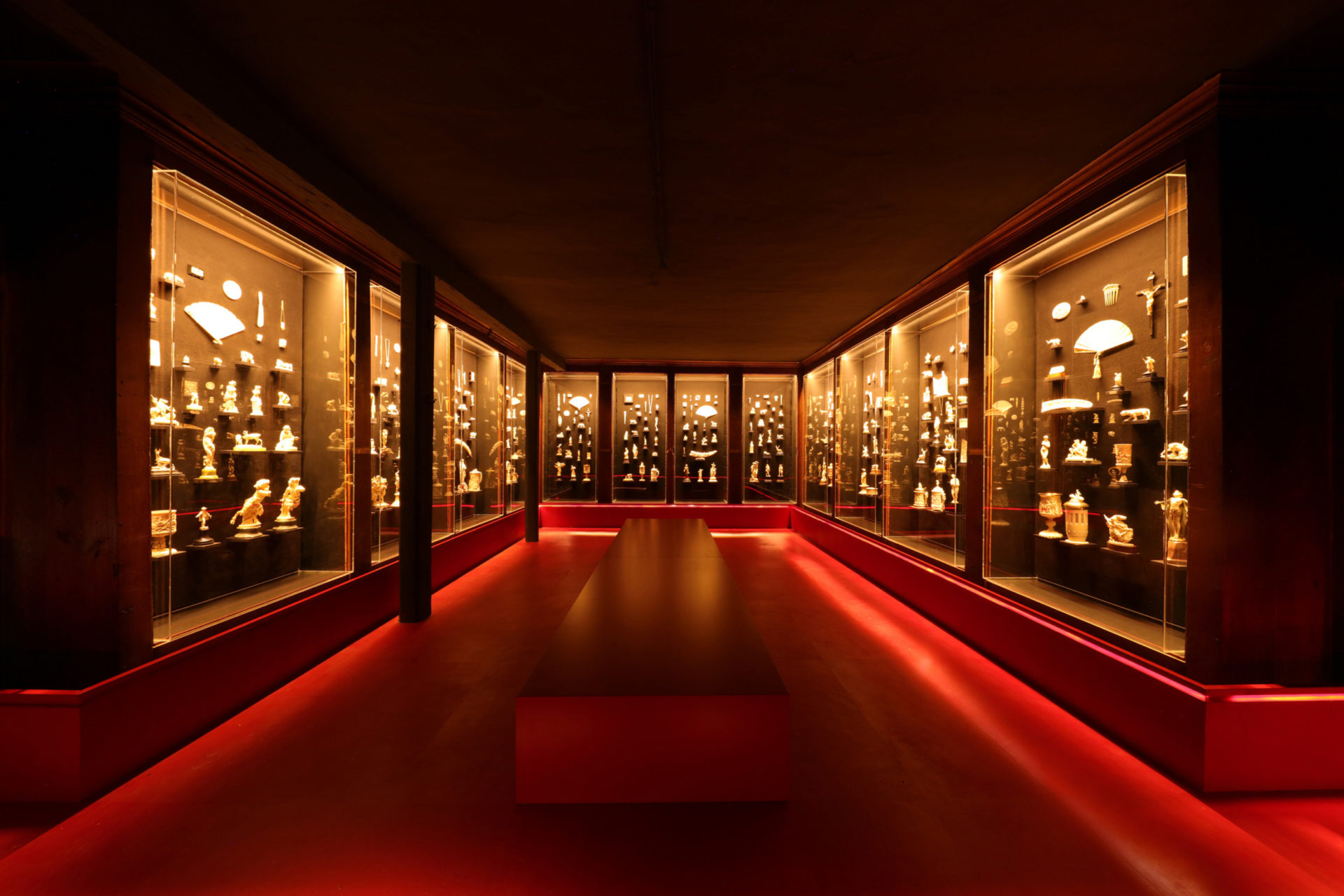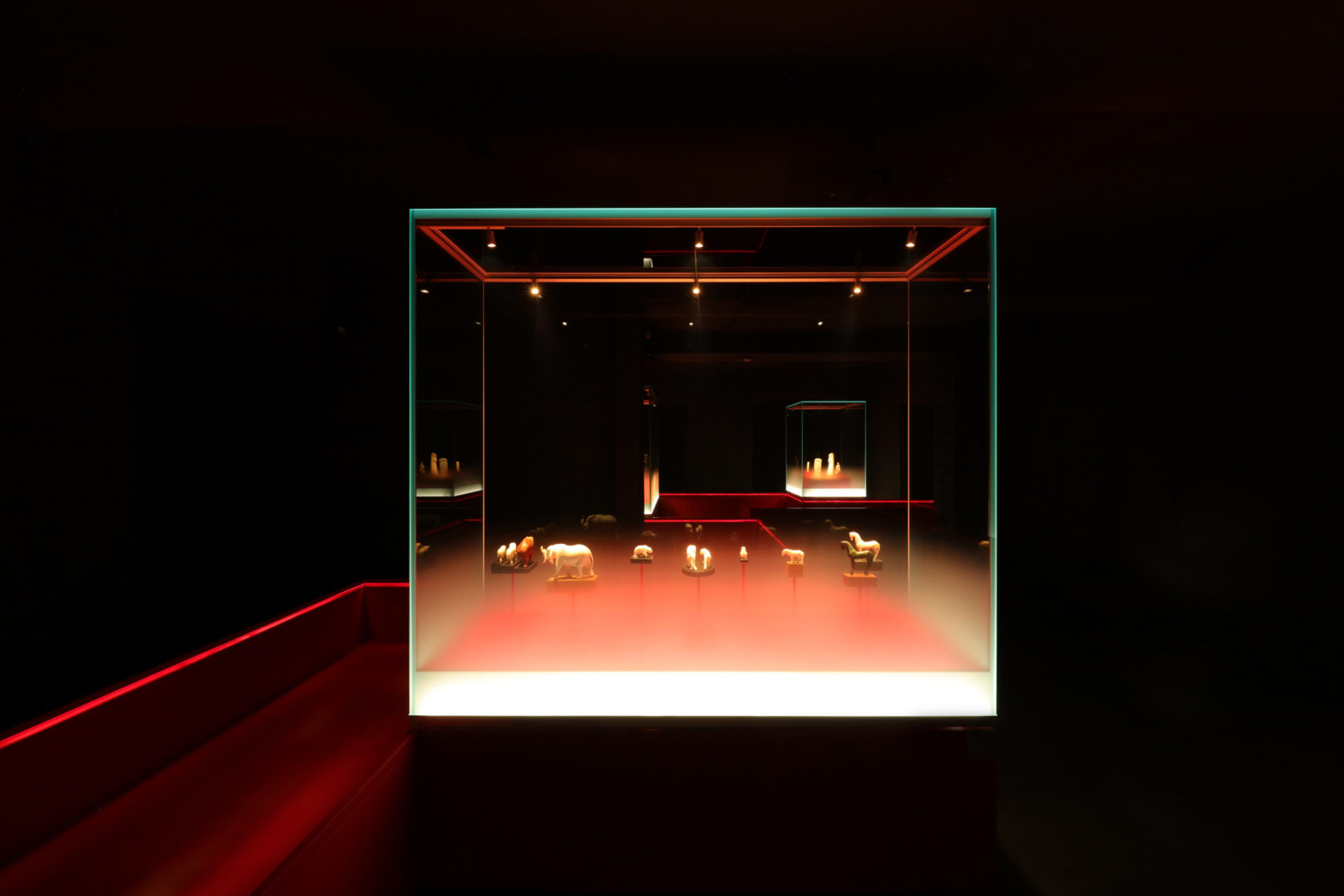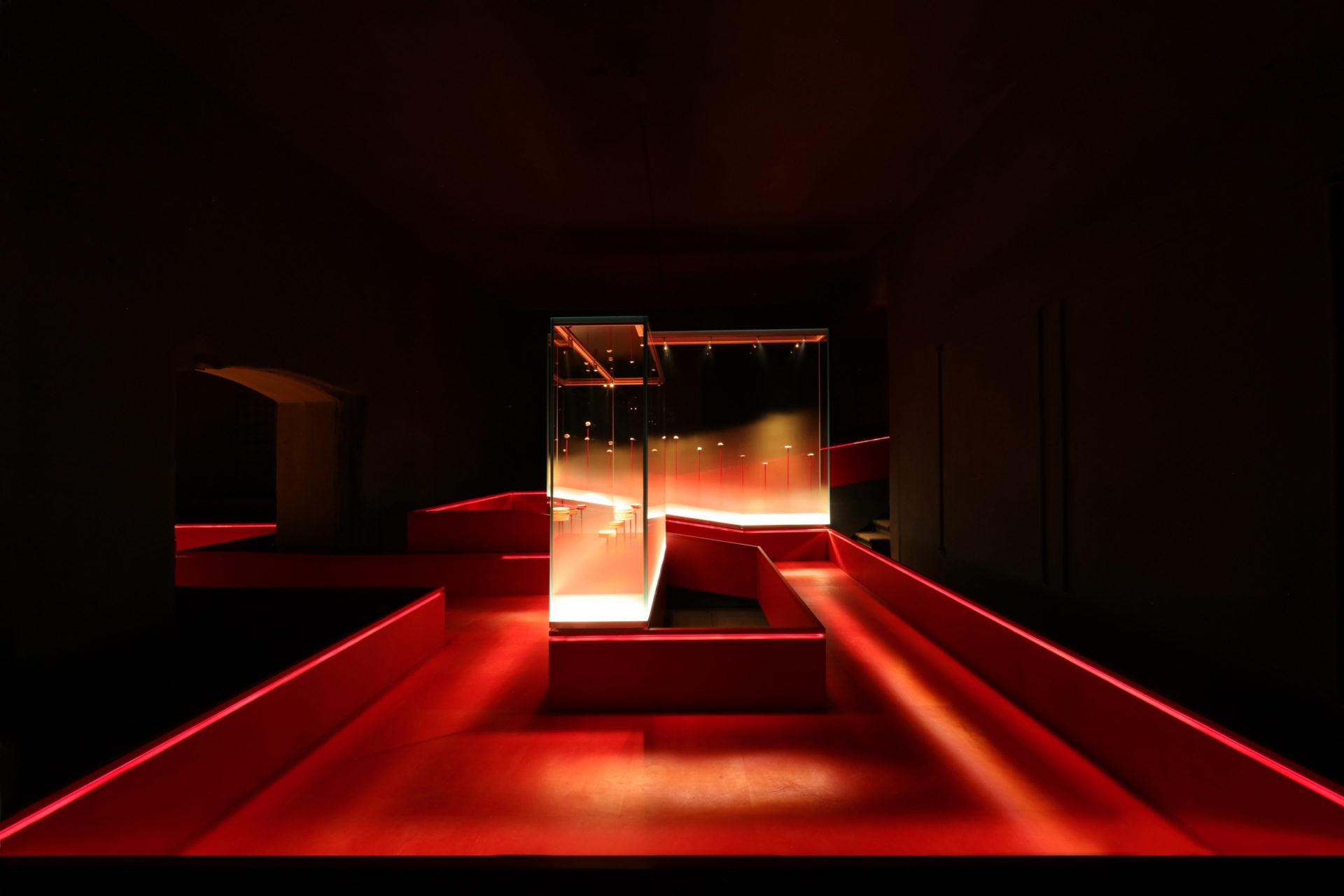
German Ivory Museum
Raised from the Haze of Time – Floating Exhibits in the German Ivory Museum Erbach
Through the passion for travelling and collection of Count Franz’ I. zu Erbach-Erbach (1754-1823), the Odenwald town of Erbach became the center of German ivory carving and had exhibited its extensive collections at the Werner Borchers Halle for many years. As of autumn 2016, a small but exquisite part of the ivory sculptures has found a new home in the Erbach Palace.
The exceptional exhibition concept of Sichau & Walter Architects BDA frees itself from the building envelope and presents the collection in blacked-out rooms painted in anthracite. Across this almost disintegrated space leads a pier that offsets the different floor levels and interconnects the showcases with a proverbial red thread. Like luminous glass cubes, the display cases are lined up on the walkway.
The lower third of the showcase glazing is lightly frosted and fitted with edge lighting, concealed in the base. As a result, the frosting assumes a gentle brightness that shrouds the object holders like a mist.
Additionally, small profiles with miniature projectors are located in the upper edge of the showcase. These offer an accentuated and glare-free orchestration of the exhibits. This evokes the impression that the figurines emerge from a sort of fog.
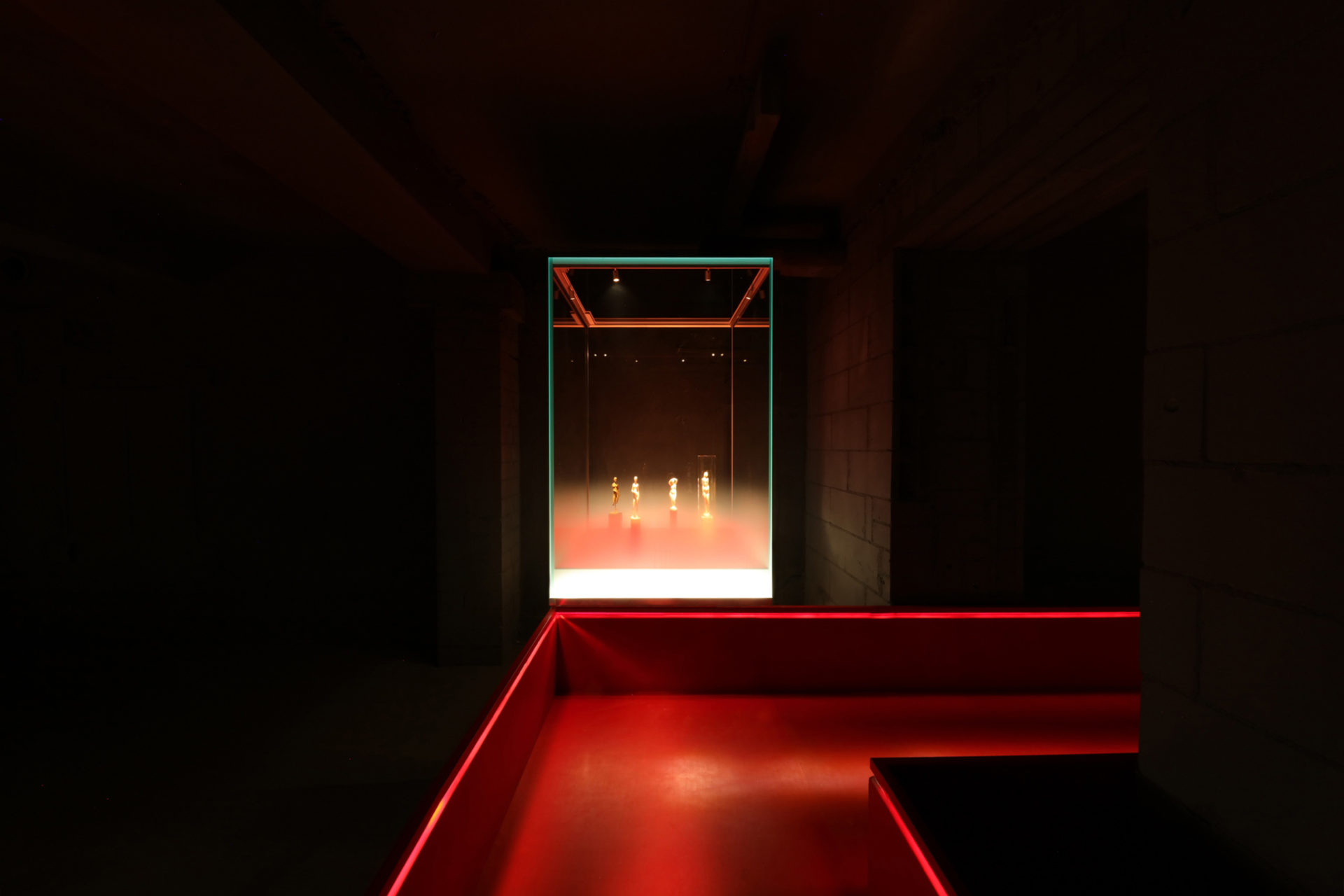
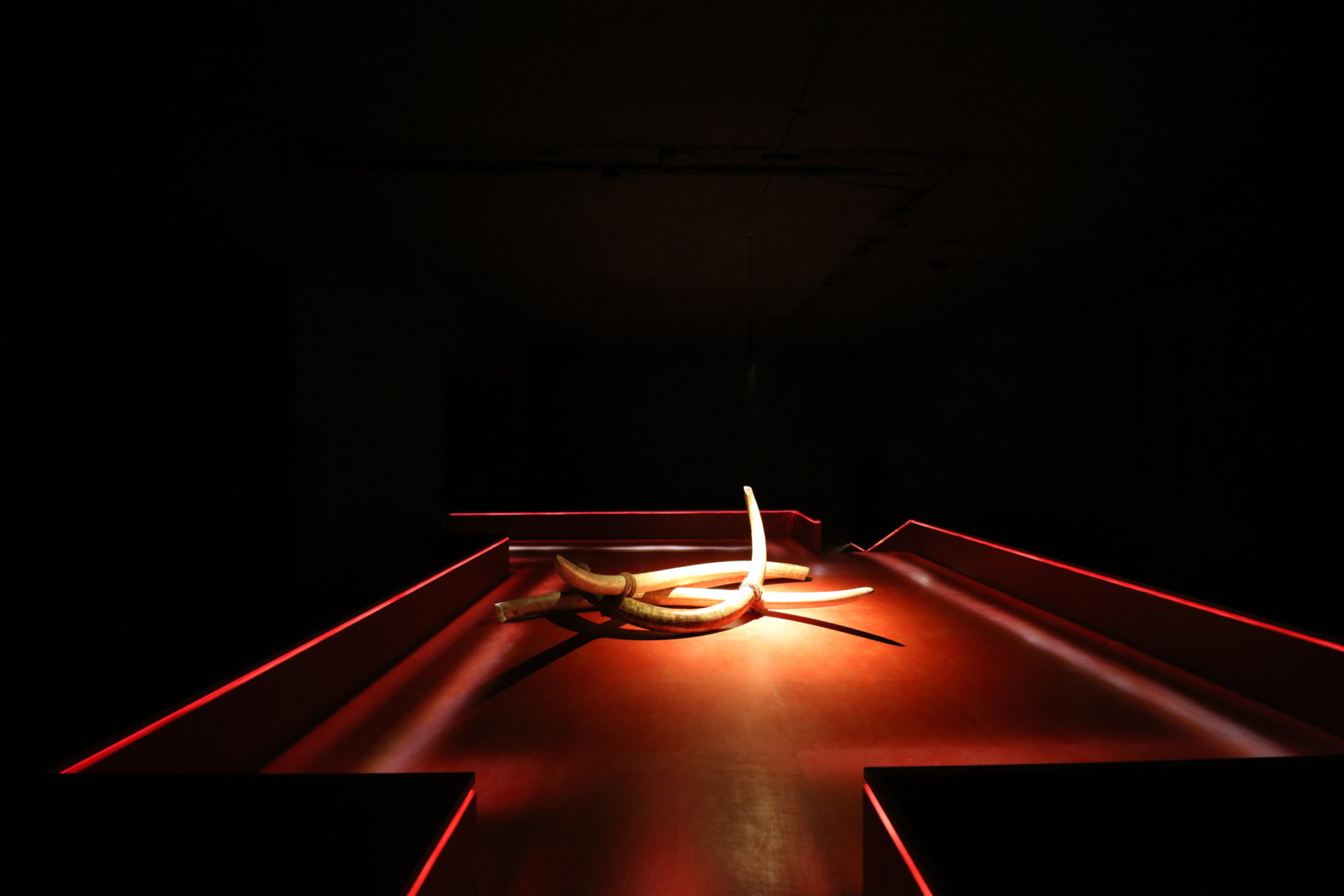
The pier and its low balustrade are clad in red leather. The walking surface is emphasized by a concealed LED light ribbon, integrated in its lateral upstand, thus transforming it into a seemingly suspended path in an intangible, almost imperceptible spatial envelope.
One of the spaces uses existing historical closets for the exhibition of many small objects, fixed to the fleece-clad rear wall. These are set in scene by means of concealed linear light sources inside the furniture.
The last space sees off the visitor with a glimpse at yet unprocessed elephant and mammoth tusks, thus making also the controversial side of the exhibition palpable. Miniature projectors on the ceiling underline the drama of this exhibit.
As a whole, the lighting concept underscores the contrasting exhibition scenery through the use of hidden, glare-free light sources and brilliantly orchestrates its treasures.
